Bong Food Facts
May 08, 2019 • 375 views
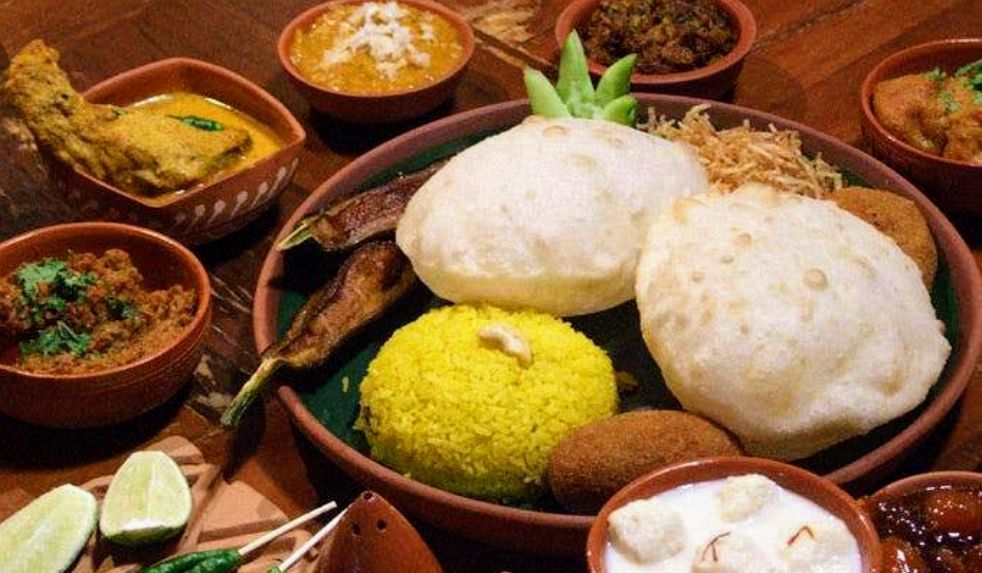
Basically Bengal has been divided into two parts after Independence, that is , West Bengal in India and Bangladesh. Whenever people hear the term 'Bengal', the only first thing that will come to their minds is the Bengali cuisine. Bengali food had been originating and evolving in the region of Bengal. In this cuisine, rice and fish plays a dominating role. That's why a Bengali is often referred as a 'Maache-Bhaate-Bangali' where Maach means fish and Bhaat means boiled rice. A Bengali meal follows a format in which food is served course-wise usually. Normally, a Bengali meal starts with a Shukto- a bitter preparation followed by Shak-leafy vegetables, Dal, Sabzi, a non-vegetarian item- fish/mutton/chicken/egg, Chutney- sweet sour saucy item and ends with sweet dish- curd, sandesh, rosogolla. With the passage of time, Bengali cuisine has evolved with Mughlai, Chinese and British cuisine to suit their own taste buds.
Different Products & distinguishing features of Bengali cuisine
We know that Bengal has been traditionally agrarian society. Bengal also practises the process of multi-cropping for the production of various fruits and vegetables whole year. Bengal has a long coastline region with rivers like Ganges, Padma, Meghna, Damodar, Mayurakshi, Teesta, Rupnarayan and many other water bodies like lakes and ponds which offer a wide variety of fish like Ruhi, Katla, Pabda, Tangra, Koi, Hilsa, Pomfret and Bhetki. It also provides sea fishes such as Shrimp, Prawn and Crabs. Here, there is a huge availability of dairy products such as Ghee, Butter,curd and variety of sweet dishes. Earlier ghee and mustard oil were widely used for cooking but nowadays people have become health conscious and the former has been replaced by refined oil. The use of whole black mustard seed either as phoron or as paste in different cuisines are much common in Bengali dishes. Kashundi is a special sauce which is prepared out of mustard paste. It is savoured with Shak served with boiled rice and different other fried items.
Daily meals of a Bengali Family
The Bengalis who are referred to be foodies not only taste different delicacies but also take pleasure in serving guests. In a Bengali household, kitchen is not only marked as an important spot but also probably the busiest section of the house since dawn. The four meals throughout the day consists of the usual breakfast, lunch, snacks and dinner.
Breakfast
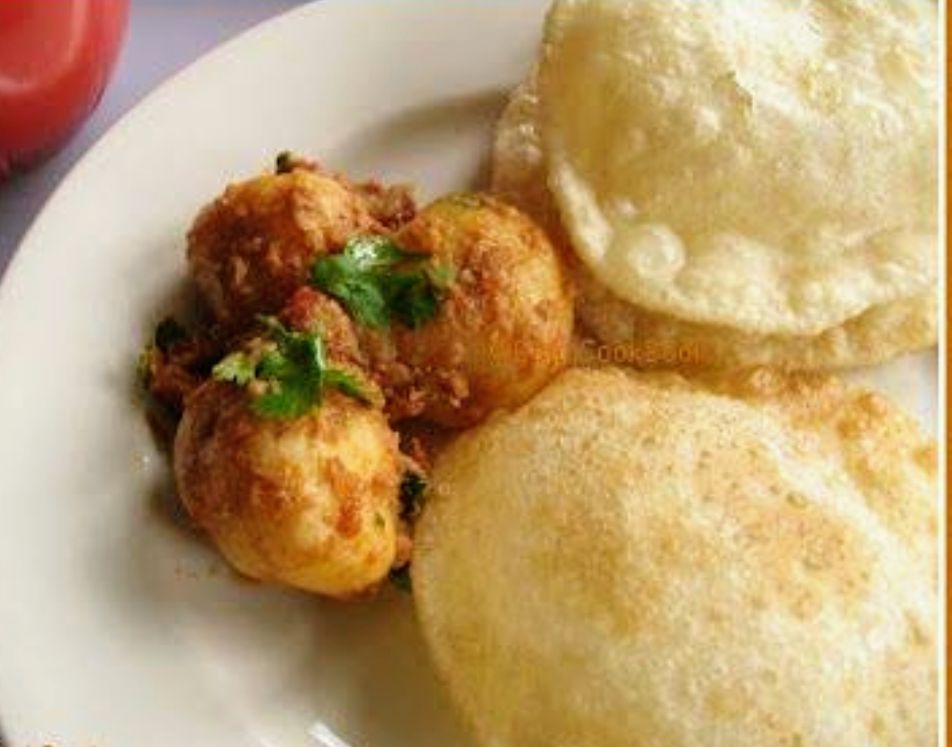
As we know that rice play an important role in a Bengali meal. So traditionally, an usual day breakfast may consist of rice in puffed form called muri, in beaten form called chira or in fried form called koi. In rural areas, the rice left over after dinner is kept in a pot and water in it which gets slightly fermented the next morning known as Pantha Bhaat. This is also consumed as morning breakfast but is very common in villages. During weekends, holidays or on special occasions, special wheat based items such as luchi- round, small,deep fried and puffed homemade bread, porota- triangular or round pan fried homemade bread with or without stuffing and kochuri- stuffed luchi served with dal or alur dum- a spicy and tasty dish made out of potato.
Lunch/Dinner
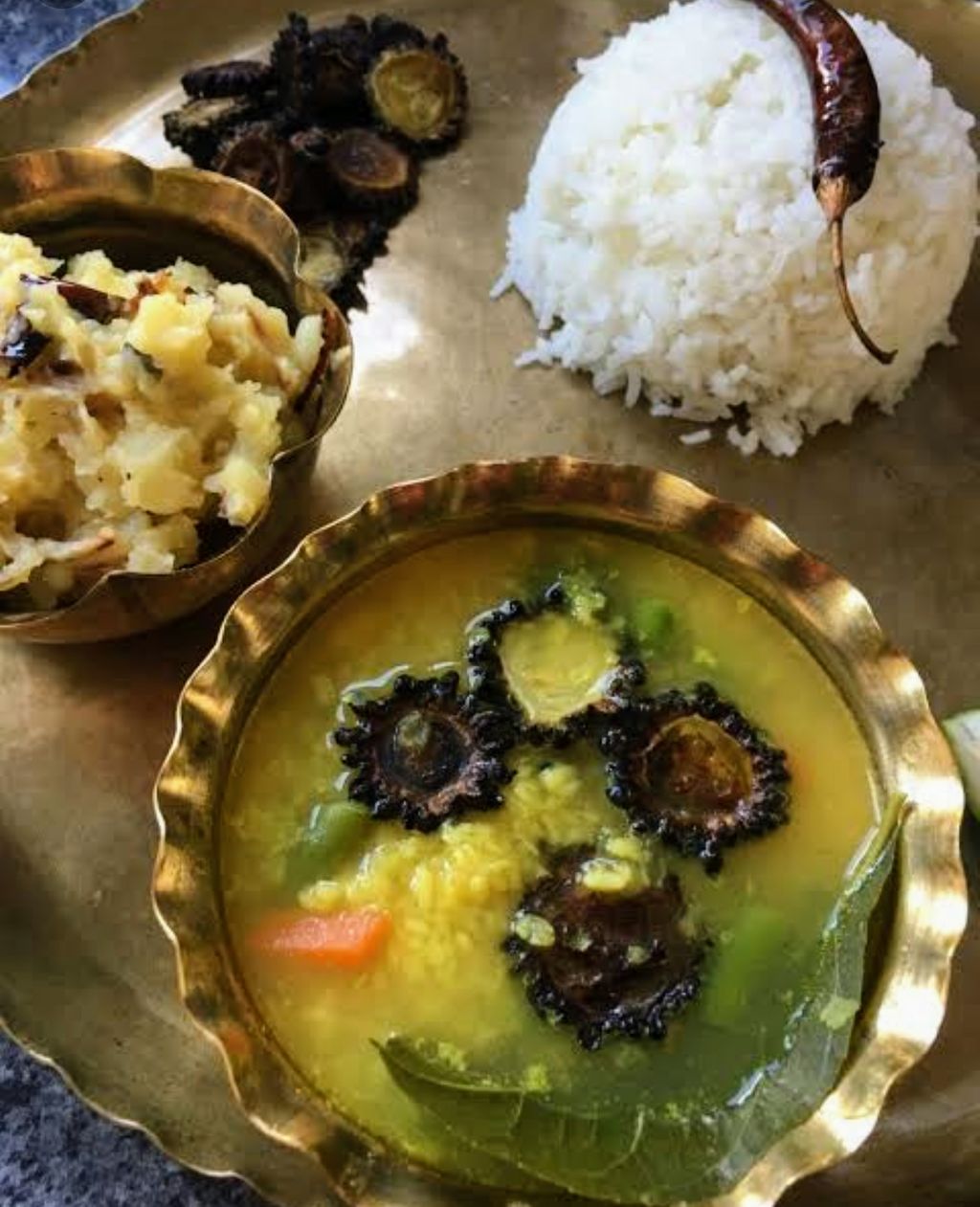
The lunch and dinner of a Bengali meal more or less comprise of the same set of items. The meal starts with preparation of bitter vegetables and herbs called Shukto during lunch followed by shak or leafy vegetables like palong among others, these two items are usually avoided during dinner. Shukto have high medicinal value which can be either a simple fry of different forms of bitter gourd and herbs like neem, mix of steamed bitter vegetables with boiled potato or a well prepared and delicious mixed vegetable containing the same. Generally, shak is consumed in fried form but sometimes added in mixed vegetables as well.
Next come dal with a number of varieties like mug dal (split green gram), mushur dal (split red lentils), and arhar dal (split ed gram) among others complimented with mashed potato or deep fried vegetables called bhaja such as aaloo bhaja (finger chips), begun bhaja (fried brinjal) and potol bhaja (fried pointed gourd or parval). Sometimes these vegetables as also chopped onions are coated with besan and deep fried which are then referred as ‘tele bhaja’. Posto bora that is poppyseed paste deep fried in balls as also maacher dimer bora that is fish eggs specially that of ruhi and katla mixed with other ingredients and deep fried are some of the other delicacies that accompany dal on special occasions of the Bengalis. Naksha bori bhaja that is beautifully designed and sundried lentils made by rural women are also deep fried and savoured with dal.
Items comprising of vegetable referred as ‘torkari' follow which can be cooked alone, in combinations as also with non-veg ingredients. When it comes to vegetables, the Bengalis excel in preparing umpteen numbers of recipes from the varied choice of regional vegetables available round the year. Not only that they are quite accomplished particularly the ones from Bangladesh or migrated from there to West Bengal in preparing delicious and mouth-watering dishes made out of often rejected parts of veggies like leaves, peels and stalks. This section of Bengalis also thrive in making appetizing cuisines like bhapa (steamed) fish and vegetables that are prepared in different fuel-efficient procedures like placing such items in a covered bowl atop pot of boiling rice.
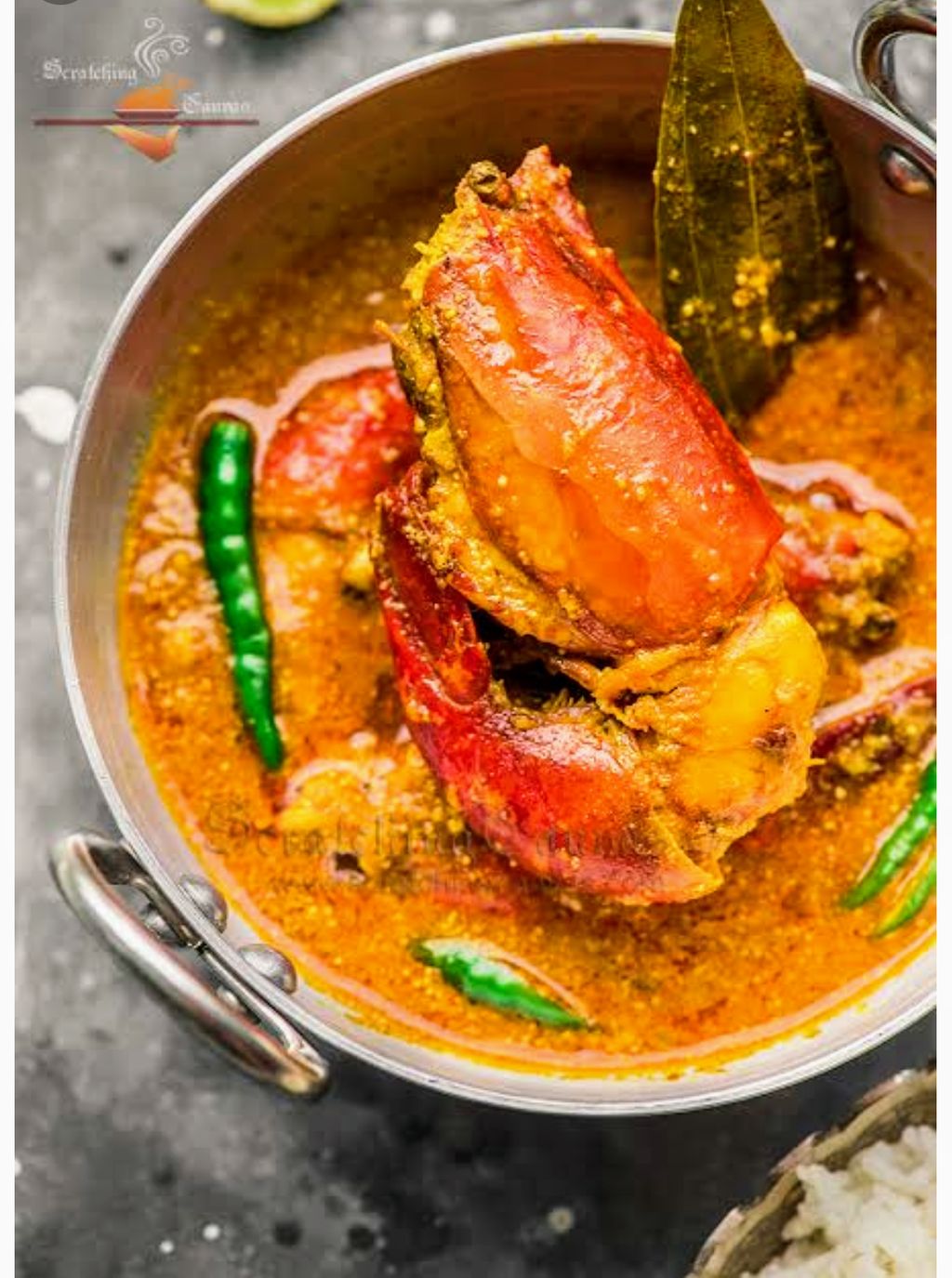
Coming back to vegetables, some purely veg dishes include doi potol, mochar ghonto, chorchori, alurdum, dhokar dalna, lau ghonto, chanar dalna and many more. Dishes like chhyanchra, lau chingri, echor chingri, potoler dolma/dorma are prepared using a mix of veg and non-veg items.
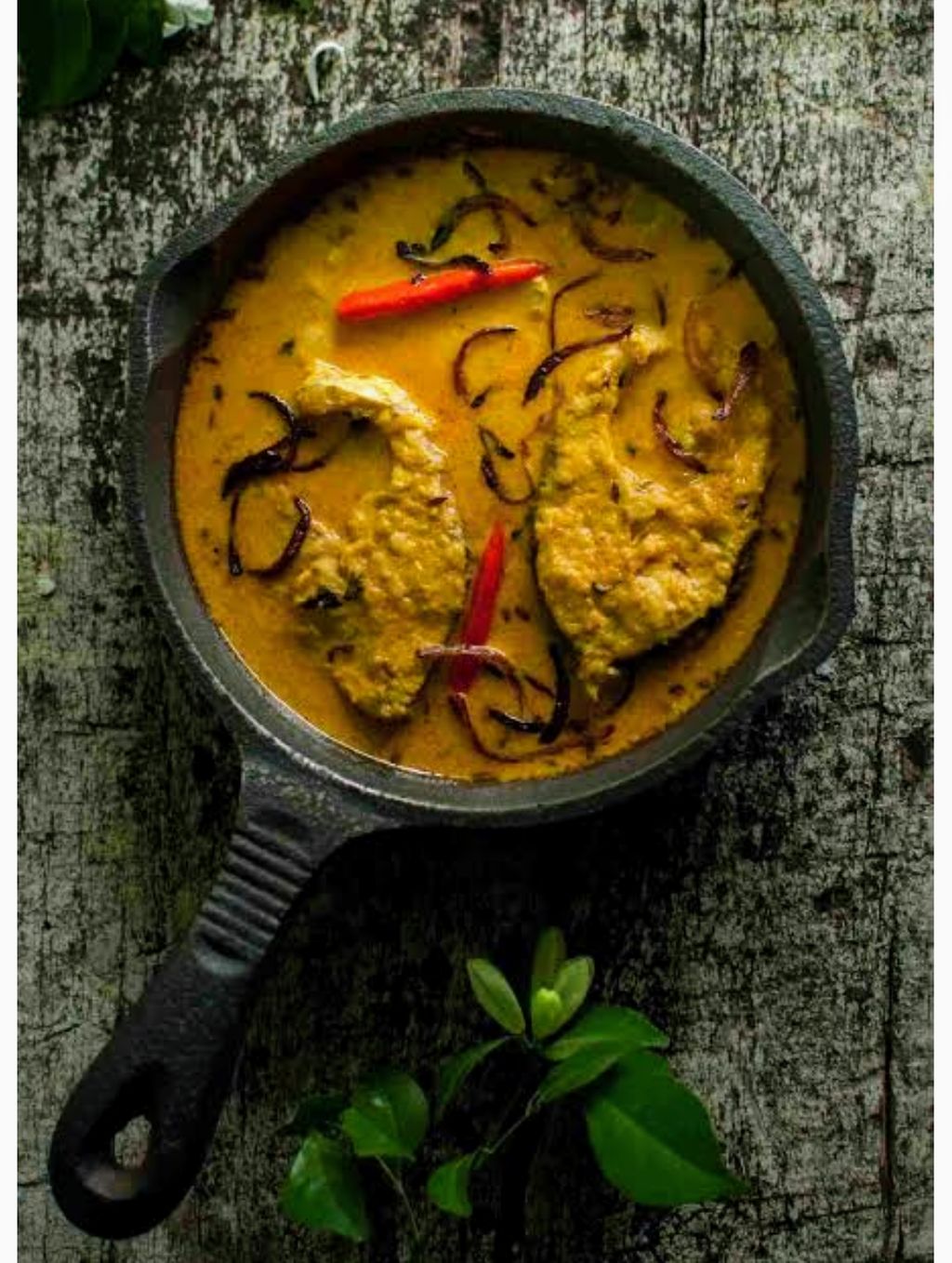
The next course in line would be one or more non-veg items that are generally segregated into jhol, a light stew like preparation; jhal, a more spicy and hot one; kalia, a rich and gravy preparation; and korma, a more sweetish form. Some of the most revered fish delicacies of Bengal include ruhi maacher kalia, tel koi, chitol maacher muitha ,ilish maacher paturi, ilish maach bhapa, pabda maacher jhaal and chingri maacher malaikari among several others. Mutton preparation like kosha mangsho or hot and spicy meat and kochi pathar jhol are among the favourite dishes of the Bengalis, especially enjoyed during lazy weekends and other occasions.

After the main dishes comes the sweet and sour chutney, a slightly thick and saucy item that can be made of tomatoes, pineapple, papaya, mango, tamarind or with a mix of different fruits including the dry ones. It is generally complimented with a papor or papadum which is made of dal or sago or potato generally roundish in shape either deep fried or roasted.

Last but not the least comes the sweet dishes. Bengalis are famous for their vast variety of sweet items starting from misti doi (sweet curd), rosogolla, variety of sandesh, payesh (rice in thickened milk) and many more. New rice, rice flour, khejurer gur that is date palm syrup, milk and coconut are used to prepare a variety of sweet dishes during Poush Sankranti which falls in the Bengali month of Poush when the Bengalis celebrate the harvest festival called ‘Poush Parbon’. Some of the most famous and mouth-watering dishes prepared during this time are pati sapta pitha, puli pitha, Gokul pitha, chitoi pitha and payesh among others.
Snacks
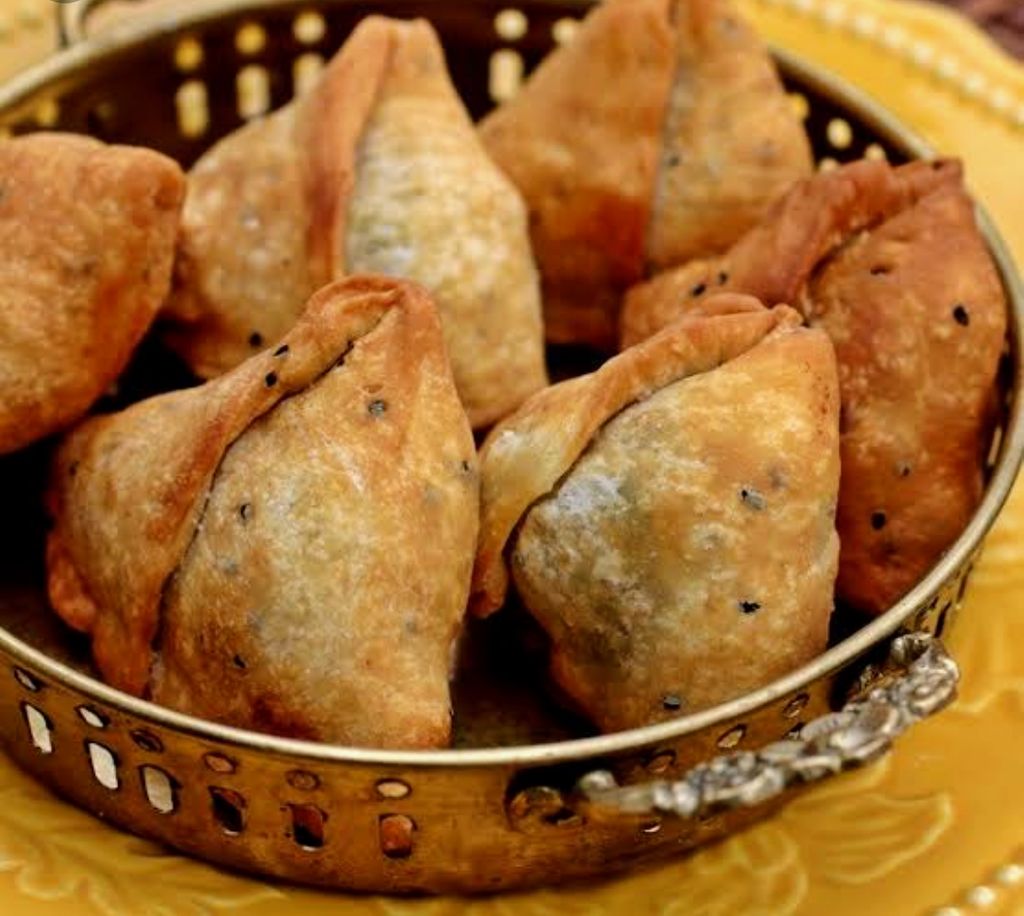
Traditional snacks of Bengalis are also varied such as muri with tele bhaja; jhal muri (muri mixed with chopped onion, boiled potato, cucumber, tomato, different spices and other ingredients); chira bhaja; and singara (samosa) that is a dry potato torkari which may also include peas and cauliflower during winter stuffed in a wheat envelope triangular in shape and deep fried.
